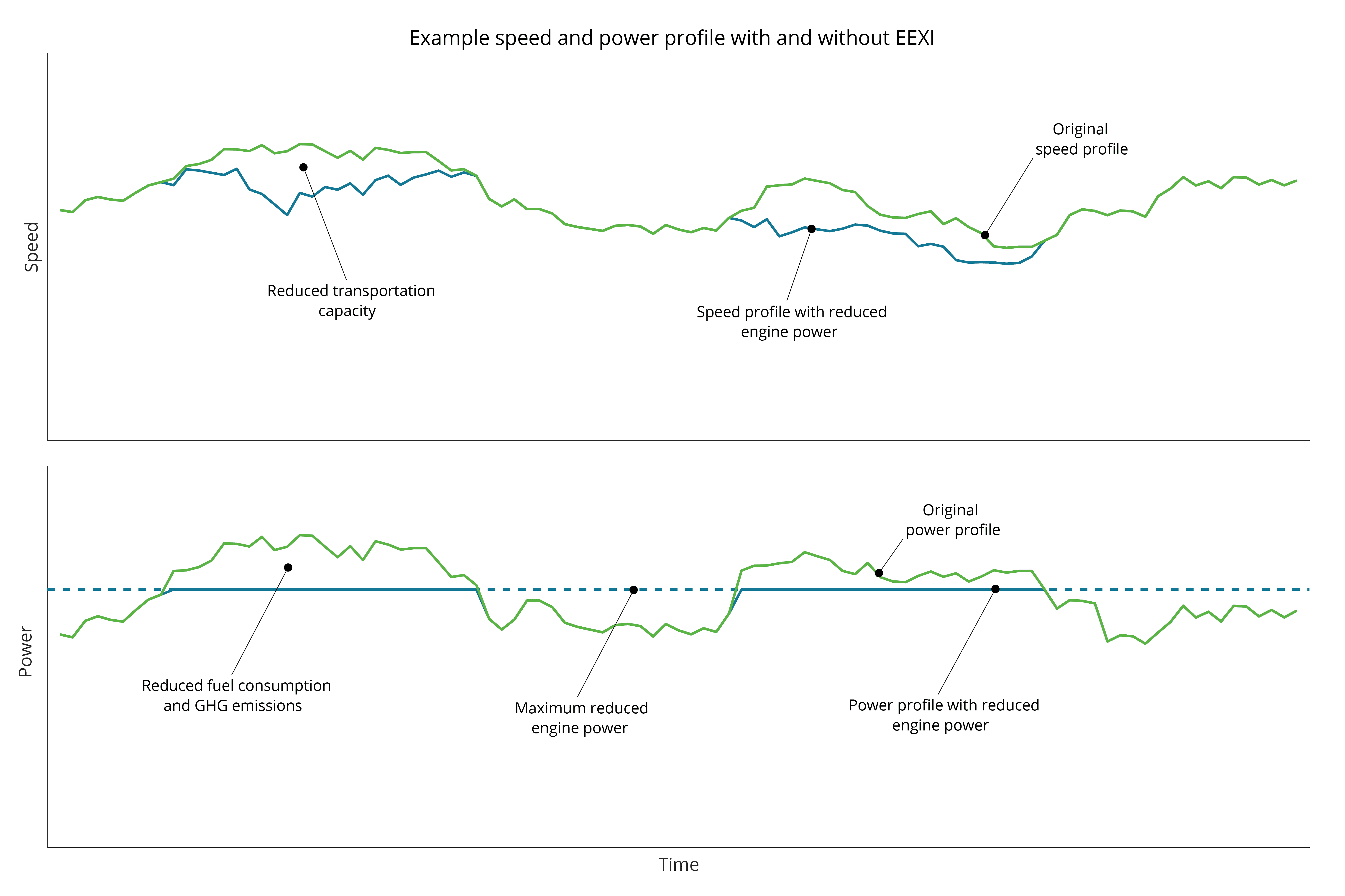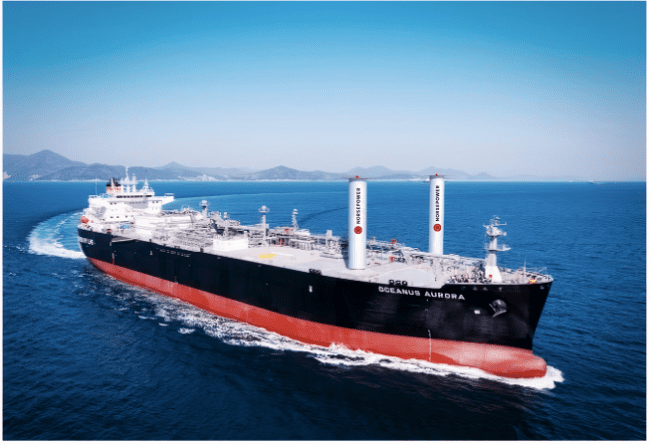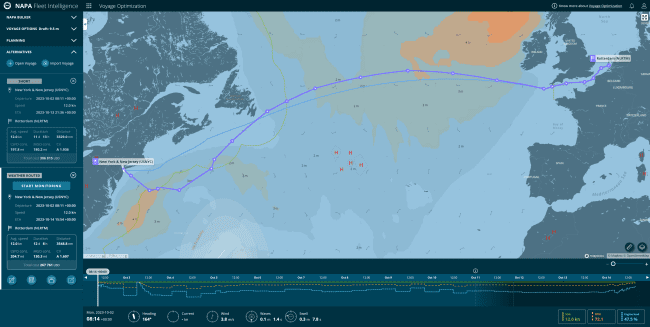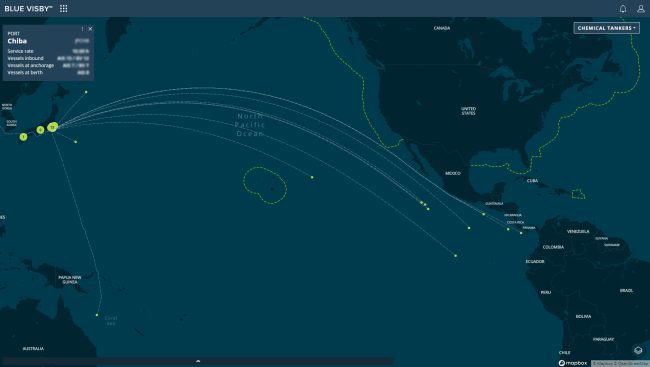NAPA analysis shows EEXI would lead to a 6.6% cut in emissions, demonstrating the scale of the challenge to reach IMO goals
Data analysis on bulk carriers imagines “what if EEXI was implemented in 2019?”, and demonstrates that de-rating engines would only impact speed in limited circumstances
Helsinki, Finland – 22 November 2021 – NAPA, the leading maritime software, services, and data analysis provider, has shared the preliminary results of its new research that explores the potential effect of EEXI (The Energy Efficiency Index for Existing Ships) on the transportation capacity, total emissions and carbon intensity of the global bulker fleet. Adopted by MARPOL in June 2021, EEXI measures and restricts CO2 emissions per transport work, purely considering the ship’s design parameters. One of the most common means of complying with EEXI is likely to be through limiting engine power.
The study is unique in its methodology and findings – it maps EEXI requirements and engine power limitation onto real-life operations, including detailed weather data and records of real routes and speed profiles cross-referenced with the NAPA ship model database, which includes vessel-specific performance models for the global fleet.
The retro-optimization study used real voyage data from 1500 bulkers over 12 months in 2019. NAPA used its Fleet Intelligence platform to study the true operational profiles of vessels in actual weather conditions, whilst analyzing how much the maximum engine power limitation would have impacted these operations.
The data shows that the engine power limitations required by vessels to comply with EEXI would only have come into effect at high-speed peaks. Therefore, for most of the year, if EEXI had been in effect, vessel operations would have remained largely similar.
In addition, the speed reductions required by EEXI would have reduced the transportation capacity by an average of 2% for bulkers. However, the impact on transportation capacity was strongly dependent on the year in which the vessel was built, ranging from under 2% for newer vessels and up to 6% for vessels built in 2012. This indicates that EEDI, which came into force more recently, helped align vessels towards the current standard.
In the study, NAPA also found that the implementation of EEXI would reduce CO2 emissions by an estimated 6.6% and carbon intensity by 4.6% on bulk carriers.
Teemu Manderbacka, Lead R&D Engineer at NAPA, said: “While this is a good start, it shows the gap between what EEXI can achieve and how much more ground there is to make up. It shows why, at MEPC 77, to truly match the level of ambition that has come out of COP26, the IMO member states will need to prioritize efficiency.”
He continued: “We wanted to analyze the effect of EEXI on real-life operations, so we tried to answer the question, ‘what would have happened if EEXI was implemented in 2019?’. We discovered that it would be similar to limiting the top speeds of cars in Europe from 160kph to 130kph. For most users on most roads, it doesn’t really change anything; the only people it affects are those on the autobahn in Germany.
“It does, however, demonstrate that EEXI can reduce carbon intensity and that the carbon savings outweigh the reductions in lost transport capacity. It’s one step on a much longer journey.”
Ossi Mettälä, Senior Customer Success Manager at NAPA, said: “It was really important that we could simulate this regulation onto real-life operations. With this in mind, we brought together a range of sources: our NAPA Voyage Optimization API, global weather data, vessel-specific performance models, the NAPA ship model database, and global AIS data to get these answers. This helped give us an accurate picture of just how far we have to go to reach the IMO’s targets – or the more ambitious targets of net-zero by 2050.
“The tools that we used to analyze the problem can also help us solve it, as they would enable vessels to operate more efficiently and provide all stakeholders with greater insight into misaligned incentives and practices, such as rushing to wait. It underlines how there remains a huge amount of latent inefficiency in shipping that we can resolve simply by using data to shape our operations better.”

This is an illustrative graph of an example day of ship operations, showing that when EEXI is enforced, limiting engine power will cut ship speeds where the green line is above the blue line.
About NAPA
In its over 30 years of operation, NAPA has become a global leader in developing and scaling software, services and data analysis for a safer, smarter, and more sustainable maritime industry.
NAPA operates globally, with 190 employees in ten countries in Europe, Asia and the Americas. To date, NAPA has 420 user organizations for its design solutions, nearly 3,000 installations onboard vessels and a growing number of subscribers for its cloud-based fleet services.
Media enquiries
Georgia Bailey
BLUE Communications
T: +44 1865 514 214
E: Georgia.Bailey@Blue-Comms.com


